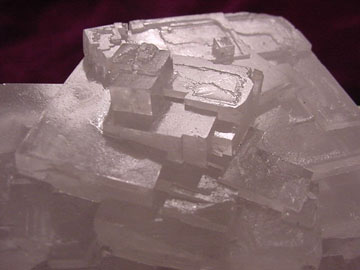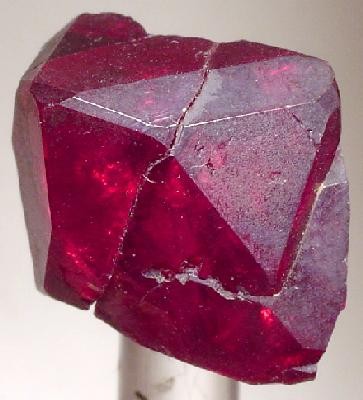|
Atacamite
Atacamite is a copper halide mineral: a copper(II) chloride hydroxide with formula Cu2Cl(OH)3. It was first described for deposits in the Atacama Desert of Chile in 1802 by Dmitri de Gallitzin. The Atacama Desert is also the namesake of the mineral. Occurrence Atacamite is polymorphous with botallackite, clinoatacamite, and paratacamite. Atacamite is a comparatively rare mineral, formed from primary copper minerals in the oxidation or weathering zone of arid climates. It has also been reported as a volcanic sublimate from fumarole deposits, as sulfide alteration products in black smokers. The mineral has also been found naturally on oxidized copper deposits in Chile, China, Russia, Czech Republic, Arizona, and Australia. It occurs in association with cuprite, brochantite, linarite, caledonite, malachite, chrysocolla and its polymorphs. Synthetic Occurrence Atacamite has been discovered in the patina of the Statue of Liberty, and as alteration of ancient bronze and copp ... [...More Info...] [...Related Items...] OR: [Wikipedia] [Google] [Baidu] [Amazon] |
Dicopper Chloride Trihydroxide
Dicopper chloride trihydroxide is the compound with chemical formula . It is often referred to as tribasic copper chloride (TBCC), copper trihydroxyl chloride or copper hydroxychloride. This greenish substance is encountered as the minerals atacamite, paratacamite, and botallackite. Similar materials are assigned to green solids formed upon corrosion of various copper objects. These materials have been used in agriculture. Industrial production Air oxidation of copper(I) chloride in brine solution Large scale industrial production of basic copper chloride was devoted to making either a fungicide for crop protection or an intermediate in the manufacture of other copper compounds. In neither of those applications was the polymorphic nature of the compound, or the size of individual particles of particular importance, so the manufacturing processes were simple precipitation schemes. can be prepared by air oxidation of CuCl in brine solution. The CuCl solution is usually made by ... [...More Info...] [...Related Items...] OR: [Wikipedia] [Google] [Baidu] [Amazon] |
Paratacamite
Paratacamite is a mineral in the halide minerals category. Its chemical formula is . Its name is derived from its association with atacamite. Paratacamite was first described by Herbert Smith in 1906. The zincian endmember is called herbertsmithite, and paratacamite is polymorphous with botallackite and atacamite. It has been found in Chile, Botallack Mine in Cornwall, Broken Hill, Australia, and in Italy at Capo Calamita on the island of Elba. See also * Atacamite Atacamite is a copper halide mineral: a copper(II) chloride hydroxide with formula Cu2Cl(OH)3. It was first described for deposits in the Atacama Desert of Chile in 1802 by Dmitri de Gallitzin. The Atacama Desert is also the namesake of the min ... References {{Commons category, Paratacamite Halide minerals Hexagonal minerals ... [...More Info...] [...Related Items...] OR: [Wikipedia] [Google] [Baidu] [Amazon] |
Botallackite
Botallackite, chemical formula Cu2(OH)3Cl is a secondary copper mineral, named for its type locality at the Botallack Mine in St Just in Penwith, Cornwall. It is polymorphous with atacamite, paratacamite and . Botallackite crystallises in the monoclinic crystal system. It is mountain-green to green in colour, with one distinct to good cleavage. Discovery and occurrence It was first described in 1865 for an occurrence in the Botallack mine, Cornwall, England, and named for the type locality. Botallackite forms in copper deposits exposed to weathering and salt water. It is reported from black smoker deposits due to reaction of primary sulfide minerals with seawater. It also occurs on copper bearing slag exposed to seawater. Minerals associated with botallackite include atacamite, paratacamite, brochantite, connellite and gypsum Gypsum is a soft sulfate mineral composed of calcium sulfate Hydrate, dihydrate, with the chemical formula . It is widely mined and is used ... [...More Info...] [...Related Items...] OR: [Wikipedia] [Google] [Baidu] [Amazon] |
Halide Mineral
Halide minerals are those minerals with a dominant halide anion (, , and ). Complex halide minerals may also have Polyatomic ion, polyatomic anions. Examples include the following: *Atacamite *Avogadrite (K,Cs)BF *Bararite (β) *Bischofite *Brüggenite *Calomel *Carnallite *Carnallite *Cerargyrite/Horn silver AgCl *Chlorargyrite AgCl, bromargyrite AgBr, and iodargyrite AgI *Cryolite *Cryptohalite (a) . *Dietzeite *Eglestonite *Embolite AgCl+AgBr *Eriochalcite *Fluorite *Halite NaCl *Lautarite *Marshite CuI *Miersite AgI *Nantokite CuCl *Sal Ammoniac *Sylvite KCl *Terlinguaite *Tolbachite *Villiaumite NaF *Yttrocerite (Ca,Y,Ce)F2 *Yttrofluorite (Ca,Y)F2 *Zavaritskite (BiO)F Many of these minerals are water-soluble and are often found in ar ... [...More Info...] [...Related Items...] OR: [Wikipedia] [Google] [Baidu] [Amazon] |
Malachite
Malachite () is a copper Carbonate mineral, carbonate hydroxide mineral, with the chemical formula, formula Basic copper carbonate, Cu2CO3(OH)2. This opaque, green-banded mineral crystallizes in the monoclinic crystal system, and most often forms botryoidal, fibrous, or stalagmite, stalagmitic masses, in fractures and deep, underground spaces, where the water table and hydrothermal fluids provide the means for chemical precipitation. Individual crystals are rare, but occur as slender to Acicular (crystal habit), acicular prisms. Pseudomorphs after more tabular or blocky azurite crystals also occur. Etymology and history The stone's name derives (via , , and Middle English ''melochites'') from Greek language, Greek Μολοχίτης λίθος ''molochites lithos'', "mallow-green stone", from μολόχη ''molochē'', variant of μαλάχη ''malāchē'', "mallow". The mineral was given this name due to its resemblance to the leaves of the Malva, mallow plant. Copper (Cu2+) g ... [...More Info...] [...Related Items...] OR: [Wikipedia] [Google] [Baidu] [Amazon] |
Arizona
Arizona is a U.S. state, state in the Southwestern United States, Southwestern region of the United States, sharing the Four Corners region of the western United States with Colorado, New Mexico, and Utah. It also borders Nevada to the northwest and California to the west, and shares Mexico-United States border, an international border with the Mexican states of Sonora and Baja California to the south and southwest. Its Capital city, capital and List of largest cities, largest city is Phoenix, Arizona, Phoenix, which is the most populous state capital and list of United States cities by population, fifth most populous city in the United States. Arizona is divided into 15 List of counties in Arizona, counties. Arizona is the list of U.S. states and territories by area, 6th-largest state by area and the list of U.S. states and territories by population, 14th-most-populous of the 50 states. It is the 48th state and last of the contiguous United States, contiguous states to be a ... [...More Info...] [...Related Items...] OR: [Wikipedia] [Google] [Baidu] [Amazon] |
Australia
Australia, officially the Commonwealth of Australia, is a country comprising mainland Australia, the mainland of the Australia (continent), Australian continent, the island of Tasmania and list of islands of Australia, numerous smaller islands. It has a total area of , making it the list of countries and dependencies by area, sixth-largest country in the world and the largest in Oceania. Australia is the world's flattest and driest inhabited continent. It is a megadiverse countries, megadiverse country, and its size gives it a wide variety of landscapes and Climate of Australia, climates including deserts of Australia, deserts in the Outback, interior and forests of Australia, tropical rainforests along the Eastern states of Australia, coast. The ancestors of Aboriginal Australians began arriving from south-east Asia 50,000 to 65,000 years ago, during the Last Glacial Period, last glacial period. By the time of British settlement, Aboriginal Australians spoke 250 distinct l ... [...More Info...] [...Related Items...] OR: [Wikipedia] [Google] [Baidu] [Amazon] |
Cuprite
Cuprite is an oxide mineral composed of copper(I) oxide Cu2O, and is a minor ore of copper. Its dark crystals with red internal reflections are in the isometric system hexoctahedral class, appearing as cubic, octahedral, or dodecahedral forms, or in combinations. Penetration twins frequently occur. In spite of its nice color, it is rarely used for jewelry because of its low Mohs hardness of 3.5 to 4. It has a relatively high specific gravity of 6.1, imperfect cleavage and is brittle to conchoidal fracture. The luster is sub-metallic to brilliant adamantine. The "chalcotrichite" (from variety typically shows greatly elongated (parallel to 01 capillary or needle like crystals forms. It is a secondary mineral which forms in the oxidized zone of copper sulfide deposits. It frequently occurs in association with native copper, azurite, chrysocolla, malachite, tenorite and a variety of iron oxide minerals.Hurlbut, Cornelius S.; Klein, Cornelis, 1985, ''Manual of Mineralogy,'' 20t ... [...More Info...] [...Related Items...] OR: [Wikipedia] [Google] [Baidu] [Amazon] |
Brochantite
Brochantite is a sulfate mineral, one of a number of cupric sulfates. Its chemical formula is Cu4SO4(OH)6. Formed in arid climates or in rapidly oxidizing copper sulfide deposits, it was named by Armand Lévy (mineralogist), Armand Lévy for his fellow France, Frenchman, geologist and mineralogist André-Jean-François-Marie Brochant de Villiers, A. J. M. Brochant de Villiers. Crystals of brochantite can range from emerald green to black-green to blue-green, and can be acicular or prismatic. Brochantite is often associated with minerals such as malachite, azurite, and chrysocolla, and may form pseudomorphs with these minerals. The mineral is found in a number of locations around the world, notably the southwestern United States (especially Arizona), Serifos in Greece and Chile. Brochantite is a common corrosion product on bronze sculptures located in urban areas, where atmospheric sulfur dioxide (a common pollutant) is present. Brochantite forms mainly in exposed areas where wea ... [...More Info...] [...Related Items...] OR: [Wikipedia] [Google] [Baidu] [Amazon] |
Caledonite
Caledonite, whose name derives from Caledonia, the historical name of its place of discovery (Scotland), is a richly colored blue-green sulfate-carbonate mineral of lead and copper with an orthorhombic crystal structure. It is an uncommon mineral found in the oxidized zones of copper-lead deposits. Collectible properties Caledonite's primary use is a collector's mineral. Although it contains copper and lead, it is a secondary mineral and is not prevalent enough in any known deposits to be used as an ore. Caledonite, when developed into full crystals, can have a deep blue-green color reminiscent of secondary copper minerals. Its high lustre, on the other hand, is more like secondary lead minerals. Localities in which caledonite occurs as well developed crystals are quite rare and include the Mammoth-St. Anthony Mine at Tiger, Arizona, a few mines in California, such as the Reward Mine. A few other mines in Arizona and Chile have been known to produce samples. Associated minera ... [...More Info...] [...Related Items...] OR: [Wikipedia] [Google] [Baidu] [Amazon] |
Linarite
Linarite is a somewhat rare, crystalline mineral that is known among mineral collectors for its unusually intense, pure blue color. It is formed by the oxidation of galena and chalcopyrite and other copper sulfides. It is a combined copper lead sulfate hydroxide with formula PbCuSO4(OH)2. Linarite occurs as monoclinic prismatic to tabular crystals and irregular masses. It is easily confused with azurite, but does not react with dilute hydrochloric acid as azurite does. It has a Mohs hardness of 2.5 and a specific gravity of 5.3 – 5.5. Linarite was first identified in 1822. It is named after the Linares Plateau, Spain. It occurs in association with brochantite, anglesite, caledonite, leadhillite, cerussite, malachite and hemimorphite. Gallery File:Linarite-130099.jpg, A shallow pocket of crystals of an intense cobalt blue, from Darwin, Darwin District, Inyo County, California, US File:Linarite-37781.jpg, Linarite with malachite, Blanchard Mine, Hansonburg District, Socorro C ... [...More Info...] [...Related Items...] OR: [Wikipedia] [Google] [Baidu] [Amazon] |



